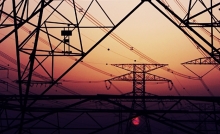
Dealing with Transformer Heat and Noise
12 August 2015
Transformers are important systems that convey electricity to different channels/wires in specified voltage and ampacity. Although electrical effects are the common interferences experienced by transformer systems, physical effects like heating and noise are also popular. There are various factors that may cause transformer noise. However, heating is a major contributor to most noises. Another known cause of audible noise is the magnetostriction phenomenon. Transformer heat and noise can cause noise that is nuisance and sickening. They also signify some crucial problems with the system which require urgent repair to prevent escalated damages.
Transformer heat
Heating can be caused by a number of things that include increase in eddy currents, overload on the windings leading to operation at maximum ampacity) and cores that are at saturation levels. To reduce the effects of transformer heat, manufactures deploy effective designing that will minimize eddy currents and ensure the core does not approach saturation levels. Larger transformers will often feature an oil tank where the cables go through to loose some of the heat and minimize noises caused by overheating. Radiator tubes that dissipate heat are fixed on the outside to guide oil paths and release the heat to the ambient air surrounding the transformer. The design of the system will determine how effective heat can be absorbed and dissipated from the transformer. Each transformer is rated in terms of its maximum operating temperature under which it will not be noisy. Dry (oil-less) transformers are rated by maximum temperature rise which is the ambient temperature beyond which the transformer can get damaged. The letter-class system of A, B, Fand H are used to indicate the temperature the transformer should operate under.
• Class A - 55°C winding temperature andmaximum 40°C ambient air temperature.
• Class B - 80°C winding temperature andmaximum 40°C ambient air temperature.
• Class F - 115°C winding temperature andmaximum 40°C ambient air temperature.
• Class H - 150°C winding temperature andmaximum 40°C ambient air temperature.
Noise caused by magnetostriction
While heating is the major cause of transformer noise, some audible noises are as a result of magnetostriction. This is a typical increase and decrease in length exhibited by ferromagnetic objects when they are subjected to magnetization (magnetic effect). The inner core of the transformer expands and contracts at about 120Hz which s twice the 60Hz required for the system. This leads to a buzzing-humming sound and secondary noises from the mechanical windings are also heard. This type of noise is usually handled by reducing the magnetic flux into the system.
Overload noise
This is another common noise caused when the primary internal and secondary external winding physically react when overloaded. For open circuit secondary winding, there will be no current path thus causing no MMF (magneto-motive force). However, closed circuits will cause an MMF that is then reflected in the primary circuit preventing core flux levels from changing and balancing. Most designers take note of the physical reactions and integrate sufficient mechanical support to accommodate the pressure.
Conclusion
Transformer noises can be quite disturbing and concentrating in such environments is often overwhelming. The above descriptions show the common types of noises, their causes and how they are minimized. Nonetheless, transformers are made up of mechanical parts that wear out and noises can be heard from time to time calling for scheduled repairs.
News
10 February 2021
OTDS have completed manufacture of 4 shunt reactors and voltage...





.jpg)